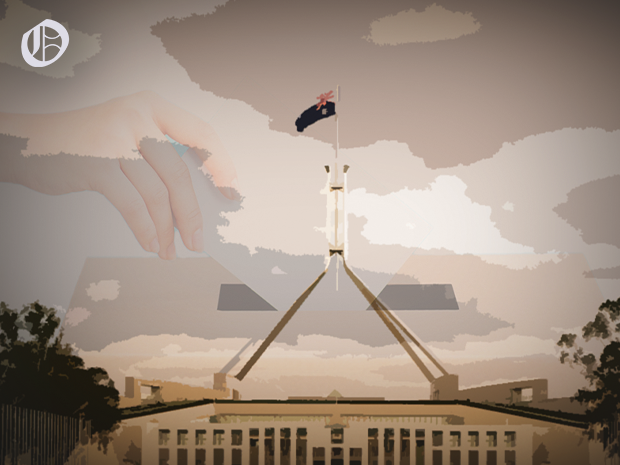ANU Sexual Assault and Harassment Review Reveals Systemic Policy Failures
This story contains discussion of sexual harassment, sexual assault & institutional betrayal.
Sexual assault and harassment policy at ANU has major flaws in reporting options, communication, support for survivors, and mechanisms of discipline, according to a review published yesterday into the issue. The review was conducted in response to the Australian Human Rights Commission’s survey published last August, which found that ANU had significantly higher rates of sexual assault and harassment than other universities. It recommends overhauling much of how ANU manages sexual harassment reporting and the correction of key failures of the current system.
This is a summary of the key findings and recommendations, with more extensive coverage to come.
Why this is happening.
Throughout 2016 the Australian Human Rights Commision (AHRC) conducted a survey into sexual assault and harassment on university campuses, asking a large sample of random students to relay their experiences with the issue. The results were not good overall, with more than half of Australian students facing sexual harassment or assault, and worse for the ANU, which was six points higher than the national average, double the national average in residential halls. Vice-Chancellor Brian Schmidt announced this review, conducted by independent firm Rapid Context, to examine the university’s policies and procedures surrounding reporting of assault and harassment, how reports are handled, what action is taken, and how survivors are supported.
Criticism and controversy have followed the review already; it was criticised for not consulting survivors of sexual assault during its formation, rather relying on documents of past cases, a choice which was justified by an attempt to get the report done quickly – it was originally slated for mid-September.
However, the review did not make this deadline, and the Rapid Context review was instead published almost four months after the survey results. Notably, the review itself recommended consulting student survivors going forward.
What’s in the review.
This review presents a perspective on ANU’s policies on sexual assault and harassment reporting and discipline which are obscure, convoluted, and at times contradictory, creating a system which at best makes it difficult and at worst actively discourages students from reporting or seeking action on assault and harassment. The review identifies policy changes which could help address these issues, as well as improving support for survivors, making policies publicly accessible, and publishing anonymised results of disputes.
What happens next.
ANU has publicly committed to following most of these recommendations. If this goes ahead, we could expect to see movement on many of these policy recommendations in coming months. However, these are extremely large changes in an institution which is typically slow to affect any kind of bureaucratic overhaul. It would also require substantial funding – for instance, the addition of a centralised reporting coordinator would require substantial staffing and upkeep costs. The ANU has not committed to any timeline for these changes.
Observer will closely follow and report on the actions of the University administration following this review, and continue to update you with more details of the review in the coming days.
Please note that the following is a summary of the positions outlined in the review and not the editorial position of Observer.
Reporting sexual assault at ANU is hard. It could be much easier.
The review shows procedures for reporting sexual assault and harassment are convoluted and not well publicised. Currently students make reports to ANUSA, PARSA, their senior resident teams, the Dean of Students, the Counselling Centre, Access and Inclusion, or other staff and students. Many of these bodies do not have complete information about policies, and the review found some will view the report as “outside of their scope”. This can lead to reports being dropped altogether, or can “create a bystander effect” in which no one institution feels responsibility to follow up the complaint.
The review advocates for the creation of a “one stop” coordination unit which students can contact for any issue; currently, different systems are in place for different types of issues. These services are largely not advertised, a concern the review also recommends addressing through publication on major student web interfaces and materials. The review also calls for the establishment of a 24-hour hotline so that students can immediately report incidents outside of business hours, and get immediate support services; however, ANU has said they will not implement this recommendation as it is “already being provided by existing services”. One source familiar with the process said ANU was referring to the service 1800RESPECT which does offer this service.
The review notes the current absence of provisions to report anonymously: while some systems including most Senior Resident groups at residential halls do manage anonymous reports, there is no guaranteed option in reporting policies for an anonymous report, and the review recommends these be implemented. It also identifies that reporting procedures are currently incident-based, discouraging reporting a culture of harassment or an unsafe work environment in a general context. They are also built with the assumption that the individual affected is making the report, discouraging whistle-blowers or external observers to report incidents. The review recommends adding provisions for both these reporting options.
It’s unclear whether ANU can or will act on sexual assault.
ANU has a Discipline Rule, a document outlining procedures for disciplining misconduct. However, the review notes that the Rule, and other policies, don’t clearly state whether they can address sexual assault and harassment, through which policy an incident should be managed, or who should manage a complaint.
This creates confusion over how a dispute should be managed: the review found that ANU policy on police referral is “at best, unclear”. It then argues that if the intent is to go to police, ANU’s role should be to support the survivor and gather information. If the intent is to make an internal disciplinary action, however, then ANU should actively investigate and have a process of determining punishment. This lack of clarity, the review finds, leaves many students unaware of whether ANU can or will address the issue. The staff who are supposed to help are often also confused; a confusion which is “exacerbated by information currently provided by the ANU”, or a lack thereof.
The review also refers to findings in the AHRC survey that “a common response by universities to disclosures of student sexual violence is to frame the issue as a police matter” by claiming the University can only act “once a police complaint is made and/or conviction secured”. While the University does not have a clear policy detailing when and how they can act, it’s certainly not clear they can take no action without conviction; the review says that ANU can take action, but that it is a “question of both law and principle and it is one that only the ANU leadership, in consultation with its community, can determine”. The review goes on to claim that determining how “ANU can and will act to address misconduct related to sexual assault is, in our view, a matter of urgency”.
Resolution of disputes is arbitrary, and students are kept in the dark.
ANU also has no clear policy on what procedure should be followed in the resolution of a dispute. The Discipline Rule and the Complaint Resolution Procedure, which is for non-disciplinary action, specify different resolution procedures, and it’s unclear which incidents fall under which process. Neither process has specific guidelines for managing sexual assault or harassment.
The review advocates for mediation – that is, discussion between perpetrators and survivors to attempt to resolve an issue – but makes clear that an overarching structure should be established to ensure that only low-level incidents go to mediation. It also argues that this process should be informed by the trauma of the student, and criticising the current mediation process, saying it “does not appear to acknowledge that some students who have complaints may be traumatised by their experiences”. This change would mean students engaging in mediation on their own terms and in ways not potentially detrimental to both their short- and long-term wellbeing.
More serious incidents, the review says, should be actively referred to police. This process should also be governed by a broader policy on when issues are worthy of police consideration however – having this provision be arbitrary leads to the issue of avoiding responsibility by citing the role of police as discussed above. It also notes that over-reliance on student peer networks, like Senior Residents, in sexual assault and harassment reporting does not provide “clear pathways” to police reporting and so students do not report. The review recommends “warm referrals”, where the referring officer from ANU would actively put survivors in contact with police and external support.
Students who report should also be given far more information about their case, the review says. Currently, ANU has no obligation to return any information on the process of the report, to resolve the report in any given time frame, or even to provide students with the results of any dispute. The review recommends all these steps be required.
Survivors need much more support.
The review identifies that many students or staff who report sexual assault or harassment undergo severe trauma, both from the incident itself, and from the process afterward. It notes a frequent lack of referral to formal support services, or the provision of insufficient or incorrect information. Specifically the review noted that many students are told, even by those who are supporting them, that services like the counselling centre are “impossible to get into” rather than providing accurate information on how best to navigate the system. The review stressed that services themselves are in fact severely limited, and that these limitations “appear to be largely due to a lack of funds, not from willingness of support staff to do more”.
As well as students who have experienced sexual assault or harassment, there is a significant need for support among those who assist or manage these reports, especially among student groups. The review found an “overwhelming sense of distress and frustration” for those assisting students on a regular basis, especially as some of these individuals are survivors of sexual assault or harassment and are re-traumatised by the frequent exposure to discussions and details of sexual assault without adequate support themselves.
Training needs to get much better.
The review recommends disclosure training be implemented for “all students and staff in support roles” but also ideally expanded to “members of the broader ANU community.” One option proposed by the review is to have a group of publically identified students with this training such that people capable of handing disclosure exist in social spaces across the university. Training should be culturally sensitive, the review says, taking account of the differing needs of “Aboriginal and Torres Strait Islander peoples, people of diverse genders and sexualities, people with disability and how these social and cultural characteristics intersect.”
Particular attention was made to the training of Higher Degree Supervisors, owing to “concerns about potential power dynamics … making HDR students and early career researchers vulnerable to sexual harassment” due to the competitive environment. The training would consist of “mandatory bystander training and modules for Higher Degree Research (HDR) supervisors and convenors”.
A database of all complaints, procedures and resolutions should be maintained.
The review recommends ANU publish the results of sexual assault and harassment disputes, minus the identities of parties involved. It advocated the university “consider regularly disseminating de-identified disciplinary outcomes reports to the wider university community.”
It furthermore advocates for the creation and maintenance of a database of all reports made, procedures followed, and the eventual results. This would allow for accurate data on the number of reports made, and how many produced any kind of result.
Students have no faith in ANU.
There is a “complete lack of trust and confidence in the reporting mechanisms and failure on the part of the university in meeting their moral and ethical responsibility to make the campus safe” among students, the review says. It claims the general student population sees the reporting processes as ineffective or nonexistent, and the university as hostile, a perception it blames on the total lack of clear reporting policies or procedures. The review recommends the full transparency of clear procedures, and the active publication of these procedures, to address this deeply rooted mistrust.
Jason Pover contributed to this report.
If you have been sexually assaulted, or affected by a sexual assault, support is available:
Canberra Rape Crisis Centre: (02) 6247 2525 (7am-11pm)
1800 RESPECT (24/7)
ANU Counselling: 02 6125 2442 (9am-5pm, Mon-Fri)
If you want to participate in the investigative campus journalism of The ANU Observer, apply to join our team. No experience required, just commitment and tenacity.









